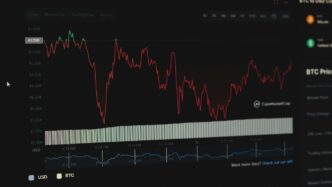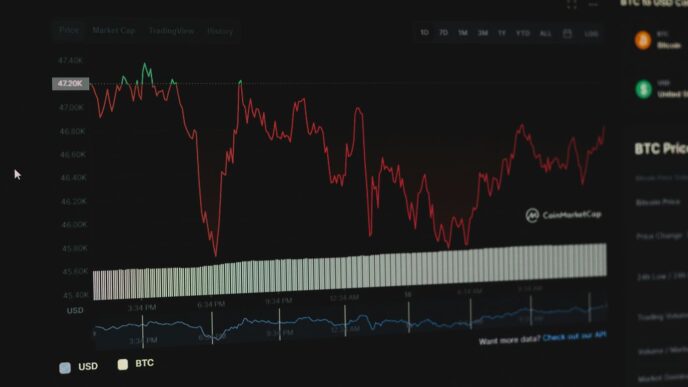Getting an organization to work well together is hard, especially when things keep changing. The McKinsey 7S Model helps businesses handle this. It’s a way to look at how different parts of a company fit together. This model helps leaders figure out what’s not working, guide big changes, and make the whole organization better. This article will show you what the McKinsey 7S Model is all about, how to use it, and how leaders have used it to make good changes.
Key Takeaways
- The mckinsey 7s model looks at seven parts of an organization and how they connect.
- These seven parts include hard things like strategy and structure, and soft things like skills and shared values.
- Using the mckinsey 7s model helps companies make changes smoothly and keep everything working together.
- To use the mckinsey 7s model, you start by understanding your company’s core values, then check how the other parts are doing.
- The mckinsey 7s model is a good tool for planning and checking progress, helping companies stay quick and grow.
Understanding the McKinsey 7S Model
Defining the McKinsey 7S Model
Okay, so what is this McKinsey 7S Model everyone keeps talking about? Basically, it’s a framework that looks at seven key internal elements of an organization to see if they’re all working together in harmony. Think of it like a car engine – if one part is off, the whole thing sputters. The model helps you figure out what’s not aligned so you can make changes. It was cooked up by Tom Peters and Robert Waterman back in the ’80s, and it’s still surprisingly useful today. It’s not just about org charts; it’s about the whole shebang.
The Seven Interconnected Elements
So, what are these seven magical elements? They’re usually listed as: Strategy, Structure, Systems, Shared Values, Skills, Style, and Staff. It’s all about how these elements interact. Change one, and you’ll likely see a ripple effect across the others. For example, if you change your company structure, you might need to rethink your systems and even the skills you need in your staff. It’s a holistic view, not a siloed one. Think of it as a web, not a set of isolated pillars. Here’s a quick rundown:
- Strategy: The plan for achieving a competitive edge.
- Structure: How the company is organized.
- Systems: The processes and procedures in place.
- Shared Values: The core beliefs and culture.
- Skills: The capabilities of the employees.
- Style: The leadership approach.
- Staff: The people and their development.
Hard Versus Soft Elements
Now, here’s a way to categorize these elements: "hard" versus "soft." The "hard" elements are the ones that are easier to define and directly control: Strategy, Structure, and Systems. These are the things you can write down in a manual. The "soft" elements are trickier: Shared Values, Skills, Style, and Staff. These are more about the culture and people, and they’re often harder to change. But don’t underestimate them! The soft elements are often what make or break a successful strategy framework. Ignoring the soft stuff is like building a house on a shaky foundation. It might look good at first, but it won’t last.
The Seven Elements of the McKinsey 7S Framework

Okay, so the McKinsey 7S model isn’t just some random business thing; it’s actually about seven different elements that all work together. Think of it like a machine – if one part is off, the whole thing doesn’t run right. These elements are split into "hard" and "soft" categories, which kinda makes sense when you think about it.
Strategy and Structure
Strategy is basically your game plan. What are you trying to do, and how are you going to beat the competition? A solid strategy gives direction and helps everyone make the right calls. It’s gotta fit with all the other elements, though, or it’s just a nice-sounding document that sits on a shelf. Structure is how everything is organized – who reports to who, who’s in charge of what. If your structure is a mess, people won’t know what they’re supposed to be doing, and things will fall apart. Think of it like this:
| Element | Description |
|---|---|
| Strategy | The plan for achieving competitive advantage. |
| Structure | The organizational chart and reporting relationships within the company. |
Systems and Shared Values
Systems are the everyday processes that keep the company running. This includes everything from how you handle customer complaints to how you do performance reviews. If your systems are clunky and inefficient, it’s going to slow everything down. Shared values are the core beliefs and principles that guide the company. They’re what everyone believes in and what makes the company unique. Shared values are super important because they shape the culture and influence how people behave.
Skills, Staff, and Style
Skills are the abilities and expertise of your employees. Do they have the skills they need to do their jobs well? If not, you need to train them or hire people who do. Staff is about your people – how you recruit them, train them, and motivate them. If you don’t have the right people in the right roles, you’re going to struggle. Style is the leadership approach of the company. Is it top-down, or is it more collaborative? The leadership style affects employee morale and productivity. You need to make sure the leadership approach fits with the culture you’re trying to create. It’s all connected, see?
Why Utilize the McKinsey 7S Model
Driving Effective Organizational Change
Okay, so you’re probably wondering why you should even bother with the McKinsey 7S Model. Well, think of it this way: organizations are complex beasts. You can’t just tweak one thing and expect everything else to fall into place. The 7S model gives you a framework to look at all the moving parts and how they affect each other. It’s like having a detailed map when you’re trying to navigate a complicated city.
For example, let’s say you want to implement a new customer service system. Sounds simple, right? But what if your staff doesn’t have the skills to use it? What if your organizational structure makes it hard for different departments to communicate? The 7S model forces you to consider these things before you roll out the new system, saving you a ton of headaches down the road. It helps you understand the impact of changes across the organization.
Achieving Strategic Alignment
Alignment is key. It’s about making sure everyone is rowing in the same direction. The 7S model helps you identify areas where things aren’t quite aligned. Maybe your strategy is focused on innovation, but your systems are set up to reward efficiency. That’s a problem! The model helps you spot these disconnects and figure out how to fix them. It’s not just about having a great strategy; it’s about making sure your structure, systems, skills, staff, style, and shared values all support that strategy. Think of it as tuning an engine – all the parts need to work together for optimal performance. Here’s a quick example:
- Strategy: Increase market share by 15% in the next year.
- Structure: Decentralized, allowing for quick decision-making at the regional level.
- Systems: CRM system to track customer interactions and sales performance.
- Shared Values: Customer-centricity, innovation, and teamwork.
Fostering Holistic Organizational Design
The 7S model encourages a holistic view of organizational design. It’s not just about structure or strategy; it’s about all seven elements working together in harmony. This means considering the soft elements (skills, staff, style, shared values) just as much as the hard elements (strategy, structure, systems). It’s about creating an organization that’s not only efficient but also adaptable and resilient. It’s about building a culture that supports your strategy and empowers your employees. It’s about looking at the whole picture, not just individual pieces. It helps you create a competitive advantage that’s sustainable over time.
Here’s a quick list of benefits:
- Improved communication across departments.
- Better decision-making at all levels.
- Increased employee engagement and motivation.
- Greater adaptability to changing market conditions.
- Stronger overall organizational performance.
Implementing the McKinsey 7S Model
Alright, so you’re thinking about using the McKinsey 7S model? Cool. It’s not just some academic exercise; it’s a practical way to get your organization humming. Let’s break down how to actually do it.
Starting with Shared Values
Seriously, don’t skip this. Shared values are the glue that holds everything together. Think of it as your company’s DNA. If those values are weak or unclear, the whole model falls apart. It’s like trying to build a house on a shaky foundation. You need to figure out what your organization truly believes in. What principles guide your decisions? What does success really look like? And are those values actually lived out, or are they just words on a wall? For example, if a company values "innovation," are they actually investing in R&D and encouraging employees to take risks, or is it just lip service?
Mapping the Current State of Elements
Okay, you’ve got your values sorted (or at least, you’re working on it). Now it’s time for a honest assessment. You need to take a hard look at the other six elements: Strategy, Structure, Systems, Skills, Style, and Staff. How are they functioning right now? Don’t sugarcoat it. Be brutally honest. This is where you figure out what’s working and what’s not. Think of it like a doctor diagnosing a patient. You need to understand the symptoms before you can prescribe a cure. For example, is your current strategy aligned with your shared values? Is your structure helping or hindering your goals? Are your systems efficient, or are they a tangled mess of red tape?
Identifying Gaps and Misalignments
This is where the rubber meets the road. You’ve got your ideal state (your shared values) and your current state (the other six elements). Now you need to find the gaps. Where are things out of sync? Where are the misalignments causing friction? This is where you’ll find the opportunities for improvement. Maybe your strategy is great on paper, but your systems can’t support it. Maybe you have a team of highly skilled people, but your structure is stifling their creativity. Identifying these gaps is the key to driving effective organizational change. It’s like finding the missing pieces of a puzzle. Once you know what’s missing, you can start to put things back together.
Applying the McKinsey 7S Model in Practice
Okay, so you’ve got a handle on what the McKinsey 7S Model is and why it’s useful. Now, let’s talk about putting it into action. It’s not just about understanding the elements; it’s about using them to actually make things better.
Analyzing Interdependencies
This is where things get interesting. You can’t just tweak one element in isolation. Everything is connected, like a giant organizational web. Think of it like this: if you change your strategy, it’s going to impact your systems, your staff, and probably your skills too. You need to map out these connections. For example, if a company decides to shift to a more customer-centric approach, it might need to invest in staff training to improve customer service skills, adjust its systems to better track customer feedback, and even change its organizational structure to empower frontline employees to make decisions.
Developing Actionable Plans
Once you’ve identified the interdependencies, it’s time to create a plan. This isn’t just a wish list; it’s a concrete set of steps you’re going to take. Each element should have its own set of actions, and those actions should be aligned with the overall goal. Let’s say you want to improve your company’s innovation. Your plan might include:
- Implementing a new system for collecting and evaluating employee ideas.
- Providing training to improve employees’ problem-solving skills.
- Changing the organizational structure to create more cross-functional teams.
- Adjusting the company’s style to encourage more risk-taking and experimentation.
Monitoring and Adapting
This isn’t a one-and-done thing. You need to keep an eye on how things are going and be ready to make changes as needed. Set up some key performance indicators (KPIs) for each element and track them regularly. Are your changes having the desired effect? Are there any unintended consequences? If things aren’t working, don’t be afraid to adjust your plan. The McKinsey 7S Model is a dynamic framework, not a static one. Here’s a simple table to illustrate how you might monitor progress:
| Element | KPI | Target | Actual | Status |
|---|---|---|---|---|
| Skills | Number of employees completing training | 100 | 85 | Off Track |
| Systems | Time to resolve customer issues | <24 hours | 30 hours | Off Track |
| Shared Values | Employee satisfaction score | 4.0 | 4.2 | On Track |
| Strategy | Market share growth | 5% | 6% | On Track |
| Structure | Number of cross-functional projects | 3 | 2 | Off Track |
| Staff | Employee turnover rate | <10% | 8% | On Track |
| Style | Number of new ideas generated | 50 | 60 | On Track |
Regular monitoring and adaptation are key to effective team collaboration and ensuring the 7S model delivers the desired results.
Leveraging the McKinsey 7S Model for Success
The McKinsey 7S model isn’t just a theoretical framework; it’s a practical tool that, when used correctly, can significantly improve an organization’s performance. It’s about more than just identifying the seven elements; it’s about understanding how they interact and using that knowledge to drive positive change. The real power of the model lies in its ability to help organizations achieve alignment and adapt to changing circumstances.
Enhancing Organizational Effectiveness
Think of the 7S model as a tune-up for your organization. It helps you identify areas where things aren’t quite working as they should and provides a structured way to address those issues. It’s not a magic bullet, but it can be a powerful tool for improving efficiency, boosting morale, and achieving better results. Here’s how:
- Improved Communication: By focusing on shared values and style, the model encourages open communication and collaboration across departments.
- Streamlined Processes: Analyzing systems and structure helps identify bottlenecks and inefficiencies, leading to smoother workflows.
- Better Decision-Making: When all seven elements are aligned, decisions are more likely to be consistent with the organization’s overall strategy and values. Consider how strategy aligns with structure.
Navigating Mergers and Acquisitions
Mergers and acquisitions (M&A) are notoriously complex, and many fail to deliver the expected benefits. The McKinsey 7S model can be invaluable in helping organizations navigate these transitions successfully. It provides a framework for assessing the cultural fit between the two organizations, identifying potential areas of conflict, and developing a plan for integration. Some key considerations include:
- Cultural Integration: Assessing the shared values and style of the two organizations is crucial for a smooth transition.
- Structural Alignment: Determining how the organizational structures will be integrated and how reporting lines will be defined.
- Systems Compatibility: Evaluating the compatibility of IT systems, processes, and workflows.
Supporting Digital Transformation
In today’s rapidly evolving business landscape, digital transformation is no longer optional; it’s essential for survival. The McKinsey 7S model can help organizations successfully implement digital initiatives by ensuring that all seven elements are aligned with the new digital strategy. This includes:
- Skills Development: Investing in training and development to ensure that employees have the skills needed to use new technologies effectively.
- Systems Modernization: Upgrading IT infrastructure and implementing new systems to support digital processes.
- Strategic Alignment: Ensuring that the digital strategy is aligned with the overall business strategy and that all departments are working towards the same goals.
For example, a company undergoing digital transformation might use the 7S model to assess its current state and identify gaps in skills, systems, and structure. It could then develop a plan to address these gaps, ensuring that the transformation is successful and that the organization is well-positioned for the future.
Real-World Applications of the McKinsey 7S Model
The McKinsey 7S model isn’t just some abstract theory; it’s been put to work in countless organizations across various industries. It’s a practical tool that helps businesses understand how different parts of their operations fit together, and how to make changes that actually stick. Let’s look at some examples.
Case Study: Global Consumer Goods Company
Imagine a large consumer goods company struggling with declining market share. They’ve tried different marketing campaigns and product launches, but nothing seems to work. Using the McKinsey 7S model, they conduct a thorough assessment of their organization. They discover that their systems and processes are outdated and inefficient, leading to slow product development and distribution. Their ‘Style’ of management is also very top-down, stifling innovation and employee engagement. By addressing these misalignments, the company streamlines its operations, empowers its employees, and ultimately regains its competitive edge. This holistic approach ensures that changes are not just superficial but deeply integrated into the company’s DNA.
Lessons from Industry Leaders
Many successful companies have implicitly or explicitly used the principles of the McKinsey 7S model to guide their growth and transformation. For example:
- Starbucks: They’ve used the 7S model to ensure that their strategy, structure, systems, shared values, skills, style, and staff are all aligned to deliver a consistent customer experience across all their stores worldwide.
- Apple: Apple’s success can be attributed to its strong alignment across all seven elements. Their innovative strategy is supported by a culture of creativity, a streamlined structure, and highly skilled staff.
- McDonald’s: McDonald’s has used the 7S model to standardize its operations and ensure consistency across its global franchise network. Their systems, structure, and shared values are all aligned to deliver a consistent product and customer experience.
Continuous Improvement with the McKinsey 7S Model
The McKinsey 7S model isn’t a one-time fix; it’s a framework for continuous improvement. Organizations should regularly reassess their alignment across the seven elements and make adjustments as needed. This ongoing process helps them stay agile, adapt to changing market conditions, and maintain a competitive advantage. Think of it as a regular check-up for your organization, ensuring that all the parts are working together smoothly. It’s about constantly tweaking and refining your approach to achieve optimal performance. Here’s a simple table to illustrate the process:
| Step | Description |
|---|---|
| 1. Assessment | Evaluate the current state of each of the 7S elements. |
| 2. Identification | Pinpoint areas of misalignment or weakness. |
| 3. Action Planning | Develop specific, measurable, achievable, relevant, and time-bound (SMART) goals to address the misalignments. |
| 4. Implementation | Put the action plans into practice. |
| 5. Monitoring | Track progress and make adjustments as needed. |
| 6. Re-assessment | Periodically re-evaluate the 7S elements to ensure continued alignment and effectiveness. |
Conclusion
So, that’s the McKinsey 7-S model in a nutshell. It’s a pretty good way for companies to figure out what’s working and what’s not, especially when things are changing. By looking at all these different parts of a business, leaders can see how everything connects. This helps them make smart choices and get everyone on the same page. If a company wants to be quick, come up with new stuff, or just grow, using this model can really help them do better. It’s like a map for getting where you want to go.
Frequently Asked Questions
What is the McKinsey 7S Model?
The McKinsey 7S Model is a simple tool that helps companies make sure all their parts are working well together. It looks at seven key things: how the company is set up (structure), its main plans (strategy), its daily routines (systems), its shared beliefs (shared values), what its people are good at (skills), how leaders act (style), and the people themselves (staff). It helps leaders understand how these parts affect each other and make changes smoothly.
What are the seven parts of the 7S Model?
The seven elements are: Strategy (the company’s plan), Structure (how the company is organized), Systems (the daily ways things get done), Shared Values (the company’s core beliefs), Skills (what the employees are good at), Staff (the employees themselves), and Style (how leaders lead).
Why do companies use the 7S Model?
Companies use this model to handle big changes, like when they grow or try new things. It helps them make sure that all parts of the company are on the same page and working towards the same goals, which makes changes happen more easily and successfully.
How do you start using the McKinsey 7S Model?
You start by looking at your company’s shared values, which are at the heart of everything. Then, you check how the other six parts are doing right now. After that, you figure out where the gaps are or where things don’t quite match up. This helps you plan what needs to change.
How does the 7S Model help with company changes?
The model helps you see how everything is connected. For example, if you change your company’s main plan, you might also need to change how people work, what skills they have, or even how leaders behave. It makes sure you think about all these connections so changes don’t cause problems.
Can this model help with company mergers or new technology?
Yes, it’s very useful for big changes like merging with another company or bringing in new technology. It helps leaders make sure that the different parts of the company, old and new, come together smoothly and work well as one.














